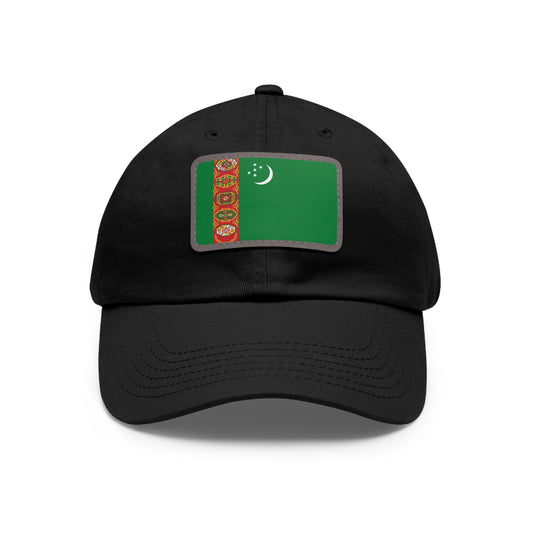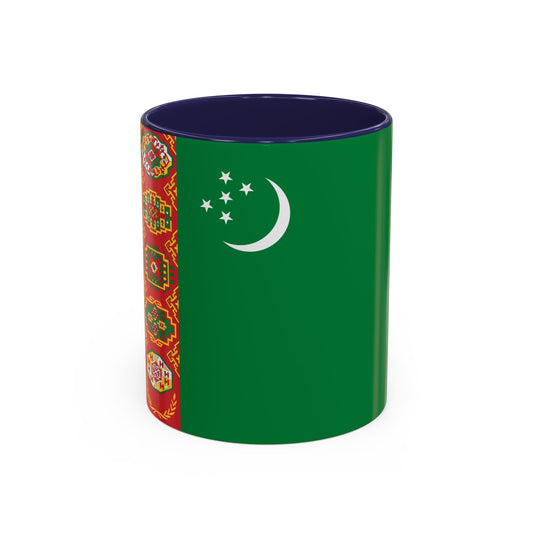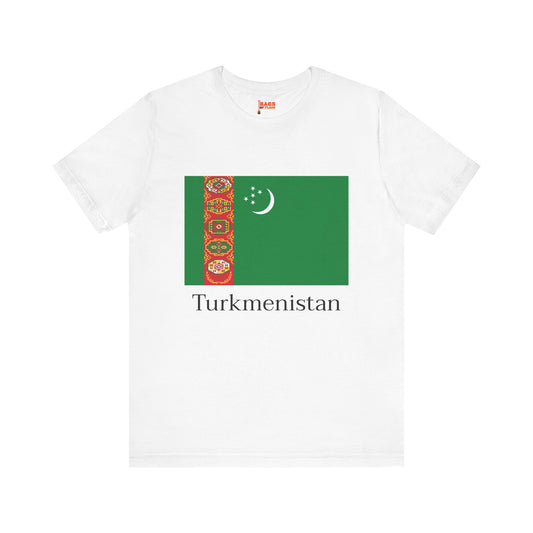-
Turkmenistan Flag Sweatshirt
Regular price $34.15 USDRegular priceUnit price / per -
Turkmenistan Pillow
Regular price $22.65 USDRegular priceUnit price / per -
Turkmenistan Backpack
Regular price $59.79 USDRegular priceUnit price / per -
Turkmenistan Leather Patch Hat
Regular price $18.85 USDRegular priceUnit price / per -
Turkmenistan Mug
Regular price $11.65 USDRegular priceUnit price / per -
Turkmenistan Sweatshirt
Regular price $34.15 USDRegular priceUnit price / per -
Turkmenistan Trucker Cap
Regular price $14.90 USDRegular priceUnit price / per -
Turkmenistan Hoodies
Regular price $34.40 USDRegular priceUnit price / per -
Turkmenistan T-shirts
Regular price $22.79 USDRegular priceUnit price / per -
Turkmenistan Flag Hoodies
Regular price $34.40 USDRegular priceUnit price / per -
Turkmenistan Flag on T-shirt
Regular price $22.79 USDRegular priceUnit price / per
Collection: Turkmenistan
The Turkmenistan flag is a vibrant and striking symbol that represents the rich history and culture of Central Asian countries. With its unique design and colors, the flag of Turkmenistan holds significant meaning for its people. We will delve into the lesser-known facts about the Turkmenistan flag, exploring its design, historical context, symbolism, current relevance, and additional interesting facts.
Overview of the Turkmenistan Flag

The Turkmenistan flag features a distinctive and meaningful composition with a rich green backdrop that symbolizes the nation's identity. Dominating the hoist side is a vertical stripe of deep red, inside are five traditional carpet guls representing the country's main tribes - Teke, Yomud, Saryk, Chowdur, and Arsary. These intricate carpet patterns are a testament to Turkmenistan's renowned textile heritage. A white crescent moon and five white five-pointed stars are positioned centrally on the green field, arranged in a canton.
This alignment of celestial symbols is not merely decorative; it carries profound cultural and religious significance, encapsulating aspects of Turkmen heritage and Islamic symbolism. The selection of colors—green, red, and white, along with the imagery of the moon and stars—resonates deeply with Turkmen traditions and beliefs, making the flag a vibrant emblem of the nation's past, present, and aspirations for the future.
Historical Context of the Turkmenistan Flag
The flag of Turkmenistan, as it is known today, was officially adopted on January 24, 2001, a significant milestone a decade after the country declared its independence from the Soviet Union in 1991. This transition period was marked by a profound transformation in national identity, with the flag's evolution reflecting Turkmenistan's newfound sovereignty and cultural revival. The original version of the flag, introduced shortly after independence, was the first in the world to feature a carpet design, specifically highlighting the five traditional patterns representing the country's major tribes. This aspect has remained a constant, underlining the importance of Turkmen heritage and the unification of its people.
Turkmenistan's shifting political landscape and its leaders' desire to forge a distinct national identity in the post-Soviet era influenced the journey to the current flag design. The modifications made to the flag over the years have been symbolic gestures aimed at reinforcing the nation's values, history, and aspirations. Each change was introduced carefully to preserve the intrinsic meanings while adapting to the evolving context of Turkmen society. Adopting the current flag was not just a change in design but a reaffirmation of Turkmenistan's autonomy, culture, and vision for the future, encapsulated within the symbolism of its national flag.
Symbolism Embedded in the Turkmenistan Flag

At the heart of the Turkmenistan flag's design lies a rich tapestry of symbolism that reflects the country's cultural, historical, and religious heritage. The verdant green background stands as a universal symbol of life and renewal, closely associated with the Islamic faith that is predominant in the country. This choice of color also underscores Turkmenistan's agricultural wealth and reverence for the natural world. The vertical stripe of red, adorned with carpet guls, not only showcases Turkmenistan's esteemed textile artistry but also narrates the story of unity and identity among its main tribes.
Each carpet pattern intricately woven into the flag's design carries the legacy of the Teke, Yomud, Saryk, Chowdur, and Arsary tribes, binding the nation's diverse cultural fabric together. The white crescent moon and the constellation of stars cast against the green field are evocative of hope, guidance, and the spiritual journey of the Turkmen people. Deeply rooted in Islamic tradition, these celestial symbols highlight the nation's devotion and aspirations toward a harmonious and prosperous future. Together, the elements of the Turkmenistan flag weave an intricate narrative of the nation's past, values, and dreams, encapsulating the essence of Turkmen identity in its folds.
Current Relevance of the Turkmenistan Flag
Today, the Turkmenistan flag is a ubiquitous emblem within the country, often seen during significant national celebrations, adorning public institutions, and held with pride in military parades. It is more than just a national symbol; it embodies the spirit of Turkmen independence, culture, and the unity of its people. Beyond its presence at official events, the flag has become a symbol of identity for Turkmen citizens, serving as a constant reminder of their shared heritage and values. Its importance transcends borders, with the diaspora using it to maintain a connection to their homeland. While the flag represents national pride, it also exists within a broader political context. Discussions about the flag sometimes intersect with conversations on governance and national identity, reflecting the complexities of Turkmenistan's social and political landscape. Nevertheless, the flag remains a powerful symbol of the country's past achievements and future aspirations, deeply resonant with the Turkmen people.
Additional Facts about the Turkmenistan Flag
The protocols for displaying the Turkmenistan flag are steeped in tradition, emphasizing the deep respect held for this national symbol. A unique protocol is the careful handling of the flag to ensure it never makes contact with the ground or any surface beneath it, reflecting the reverence with which it is regarded throughout the country. During ceremonies of raising or lowering the flag, participants exhibit a high degree of solemnity and precision, highlighting the flag's importance in Turkmen culture and governance.
Another interesting aspect of the flag is its representation of the unity and diversity of Turkmen society through the symbolism of the five stars. While each star is commonly understood to represent one of Turkmenistan's major tribes, this feature also underscores a broader theme of solidarity across the nation's diverse cultural landscape. Additionally, the crescent moon adorning the flag, beyond its representation of Islam, signifies the hope and renewal that guide the Turkmen people.
Notably, the Turkmenistan flag holds a record for its unique design, being the only national flag to feature a carpet pattern. This element highlights the country's historical prominence in textile arts, particularly in carpet weaving, which is a significant aspect of Turkmen cultural heritage. These details encapsulate not only the flag's aesthetic and symbolic dimensions but also its role in fostering national pride and unity.






















